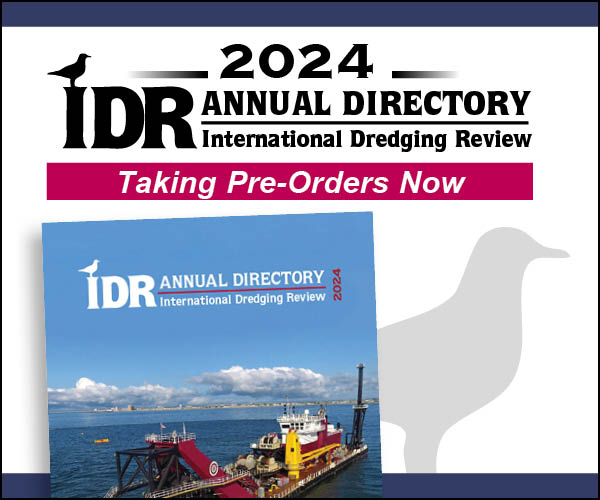Jan de Nul to Dredge Argentina’s Port of Quequen
Jan de Nul has bagged a three-year contract to dredge one of Argentina’s largest ports and is aiming to win a second contract to deepen it.
The Port of Quequen 300 miles south of Buenos Aires is the primary grain port in one of the highest grain-producing regions in the Americas. Belgian dredging contractor Jan de Nul signed a contract with administrators of the Port of Quequen in October to conduct dredging at the port. Quequen’s port authority has contracted Jan de Nul to return Quequen to its original dredged depth and then maintain that depth for three years. The exterior channel which is 120 meters wide (394 feet) will be re-dredged to 14 meters (46 feet) while the interior channel the turning basis and the port terminals will be dredged to 13 meters (43 feet).

The port has lost some of its depth to siltation in recent years.The port is prone to siltation because the nearby Rio Quequen brings mud into the area while ocean currents deposit sand in the port’s access channel according to Puerto Quequen Port Authority Consortium spokesman Federico Brisighelli.
To handle the task Jan de Nul will use its trailing suction hopper dredge Niña with a hopper capacity of 3500 cubic meters (4577 cubic yards) as well as the water injection dredge DN28. These dredges will be tasked to remove a total volume of three million cubic meters (xx cubic yards) of sediment according to Jan de Nul spokeswoman Liesbeth Van der Biest.
“We expect to start dredging by the end of the year” Van der Biest told IDR in an email.
Meanwhile the port authority has recently issued a second request for proposals to contract a dredging company to deepen the port.
Quequen is located in the curved belly of Buenos Aires province an ocean town that butts up against Argentina’s wide pampa. Less than a mile out to sea from the mouth of the port the Atlantic floor drops off quickly reaching a natural depth of more than 46 feet. This allows boats to navigate freely through open waters until they are within about 20 minutes of the port – a tremendous difference from the city of Buenos Aires’s ports which can only be accessed by navigating through the Rio de la Plata via dredged channels for hours.
The Port Authority of Quequen is building a new grain terminal that will have a berth length of 478 meters (1568 feet) a 200000-ton storage area and will be able to load 2400 tons an hour. This project is in the first of three stages and will incur an estimated investment of $35 million. The port has six berths of between 162 and 414 meters (531 and 1358 feet). Most berths handle grains and are served by enormous silos but some handle liquid or solid fertilizers or fuel oil. In 2013 some 5.7 million tons of grains and other goods moved through Quequen. Its largest export was soy (2.2 million tons) followed by barley (1.7 million tons) corn and wheat.
For the port deepening project Jan de Nul is one of four companies prequalified to bid. The others are Boskalis International BV Dredging International NV and Van Oord Dredging and Marine Contractors BV. At the time of that prequalification announcement Puerto Quequen Port Authority Consortium President Martin Caraffo said the purpose of the project is to improve operational and navigational conditions generate a better business climate in the region and draw investments to Quequen.
“These works will not only benefit the port sector but will also have a direct benefit to the wellbeing of the entire community” Caraffo said in a press release noting that some 80 percent of the zone’s economic activity was agricultural exports.
Argentina’s vice secretary for ports Jorge Otharan said that Quequen’s depth is “the best thing going for it” and the project was important to ensure it stayed that way.
Jan de Nul is taking over the dredging responsibilities from a Brazilian consortium made up of Servimagnus S.A. SDC Do Brasil Servicios Maritimos Ltda. Rowing S.A. and Servidragas S.A. who were tasked with maintaining the port’s depth in 2013. Prior to that between 2007 and 2012 dredging maintenance was performed by a consortium between Boskalis and Compañia Sudamericana de Dragados.
The port was first dredged to its current depth of 13 meters (43 feet) in 1991 when Boskalis was hired for the expansion. The new contract would expand the port’s depth to 15 meters (49 feet) which will allow them to handle more traffic from the mega-boats that will be traversing the expanded Panama Canal starting as soon as next year.



